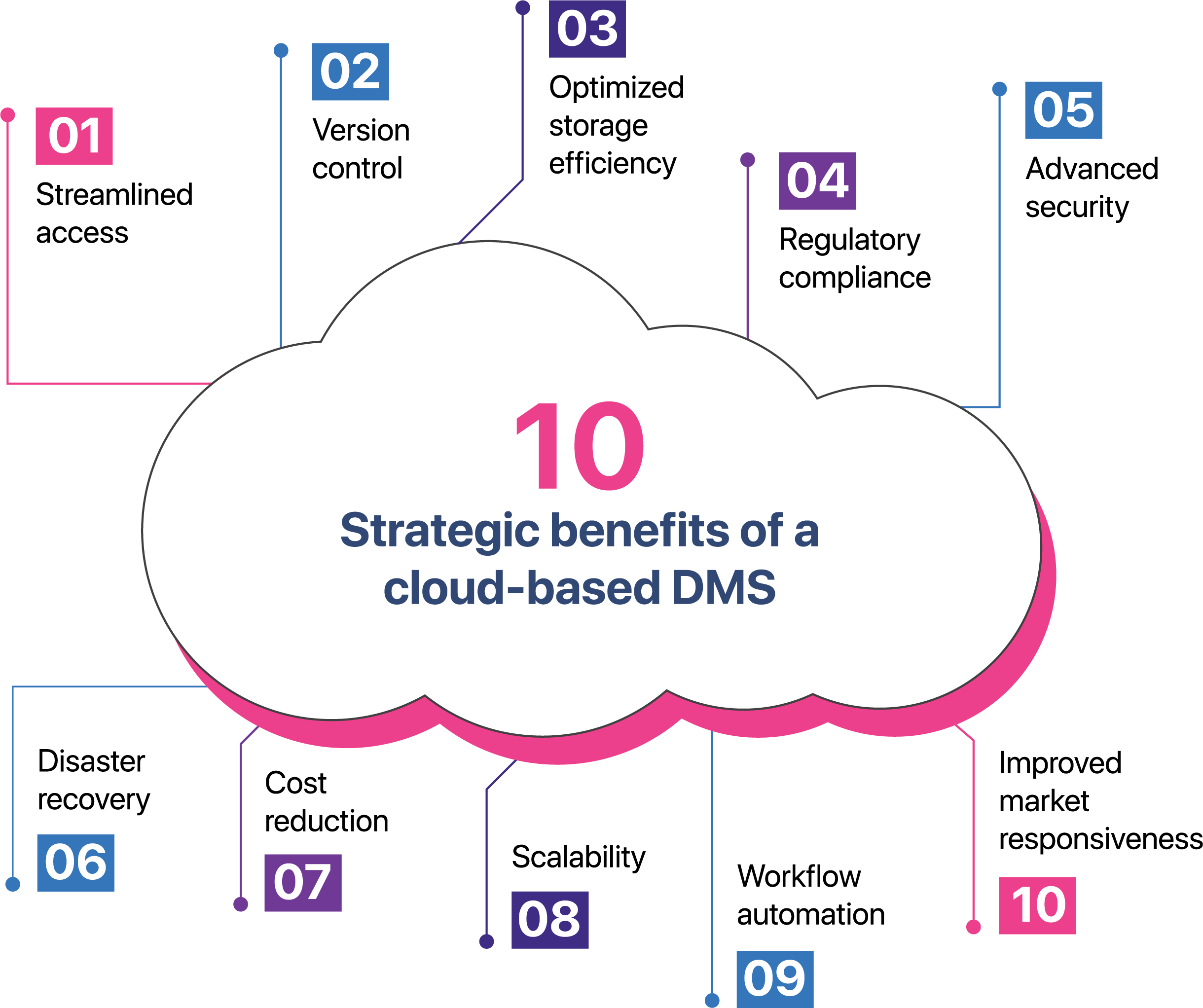
Listen to this blog
Introduction
According to Statista, 26% of remote workers face significant communication challenges, highlighting inefficiencies in traditional document management. Legacy systems that rely on physical files or localized servers hinder productivity, delay decision-making, and expose organizations to security risks. As businesses shift towards remote and hybrid models, a cloud-based document management system (DMS) provides a centralized solution that enhances security, optimizes storage, and streamlines workflows. Beyond collaboration, modern DMS solutions offer version control, disaster recovery, and cost savings—critical components for business resilience in a digital-first economy.
How decentralized document storage disrupts operations
Decentralized document storage creates systemic inefficiencies for remote teams and access to critical data. Scattered files across multiple devices or platforms in silos lead to inconsistent access, redundant efforts, and unreliable version tracking. Without centralized control, organizations risk data loss, compliance violations, and inefficient disaster recovery, all of which impact productivity and business continuity.

The role of centralized document management in business growth
A cloud-based DMS consolidates documents into a secure, centralized hub, eliminating inefficiencies caused by fragmented document storage. By automating workflows and standardizing document management, organizations can reduce errors, accelerate decision-making, and ensure regulatory compliance. These efficiencies not only reduce costs but also enable businesses to scale with agility.

10 strategic benefits of a cloud-based DMS

Why businesses are shifting to cloud DMS for data management

A cloud DMS plays a crucial role in disaster recovery & business continuity planning. Unlike traditional systems that rely on physical backups, cloud-based solutions ensure data redundancy through automated backups and geo-distributed storage. In the event of cyber threats, accidental deletions, or system failures, organizations can quickly restore files with minimal disruption. This level of preparedness strengthens business continuity and mitigates financial and reputational risks.

One of the most overlooked advantages of a cloud DMS is its ability to optimize storage. By eliminating the need for on-prem storage infrastructure and reducing file duplication, businesses lower IT costs while improving data-driven decision-making for organizations. Additionally, automated workflows reduce administrative overhead, freeing up resources for more strategic initiatives.

Data security is a growing concern for businesses managing remote teams. A cloud DMS offers built-in compliance features such as encryption, role-based permissions, and audit trails to meet regulations like GDPR and HIPAA. These security measures protect sensitive data from unauthorized access while ensuring organizations meet legal and industry standards.

The global DMS market is expected to grow at a 14.5% CAGR, reaching $14.82 billion by 2029 (Fortune Business Insights). Emerging AI-driven features like intelligent search, metadata tagging, and predictive analytics will further enhance efficiency by reducing manual efforts. Additionally, immutable backups and enhanced disaster recovery capabilities will strengthen operational resilience in the face of disruptions.
Conclusion
Adopting a cloud-based DMS is a strategic decision that goes beyond improving collaboration; it optimizes storage, strengthens security, enhances disaster recovery, and reduces costs. With robust encryption, compliance tools, and centralized access, businesses empower remote teams to work efficiently while safeguarding critical data. As digital transformation accelerates, investing in a cloud DMS is not just an upgrade but a foundational step toward sustained growth and operational excellence.




